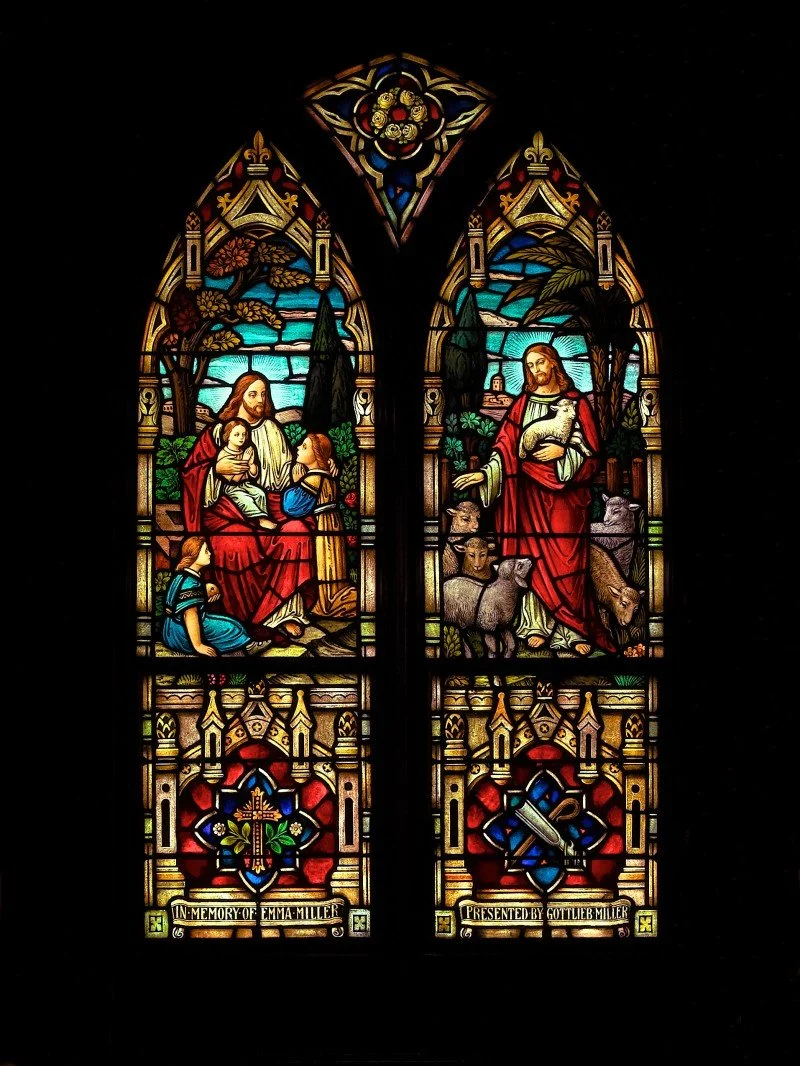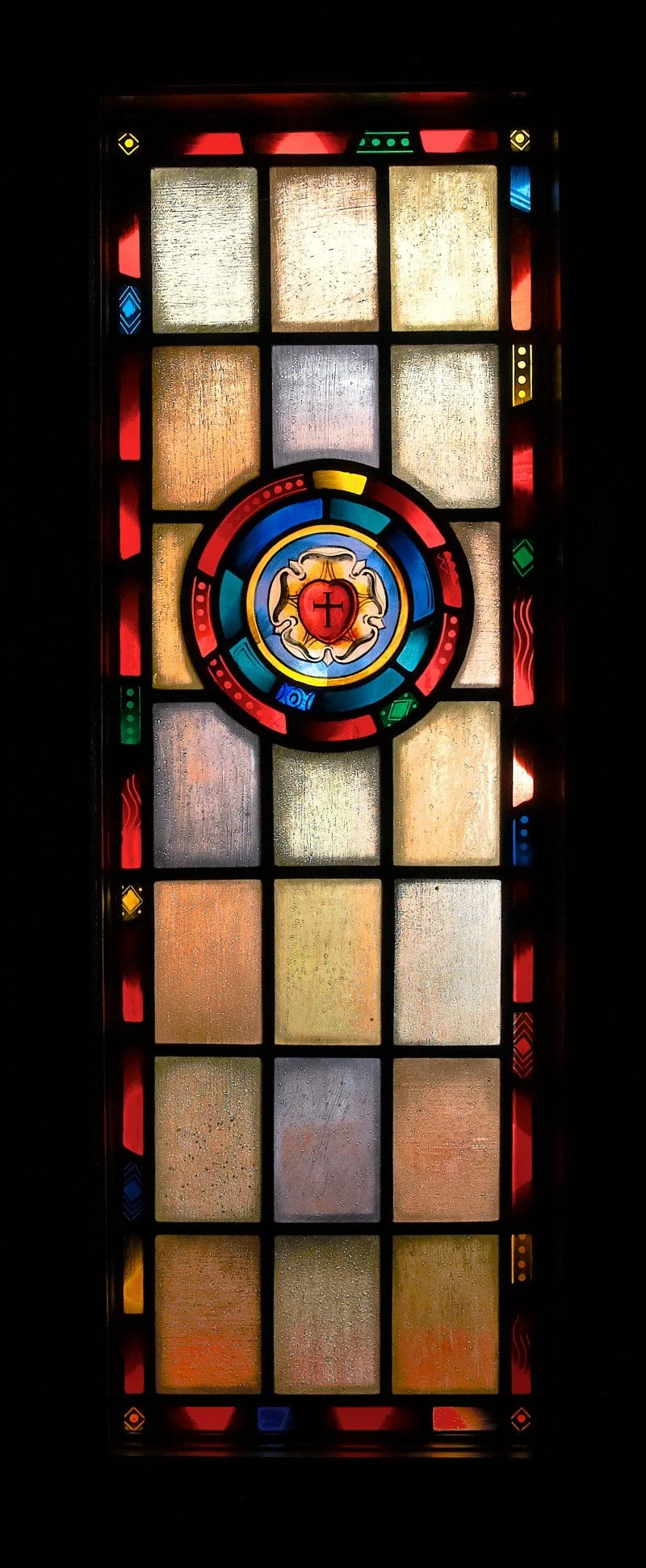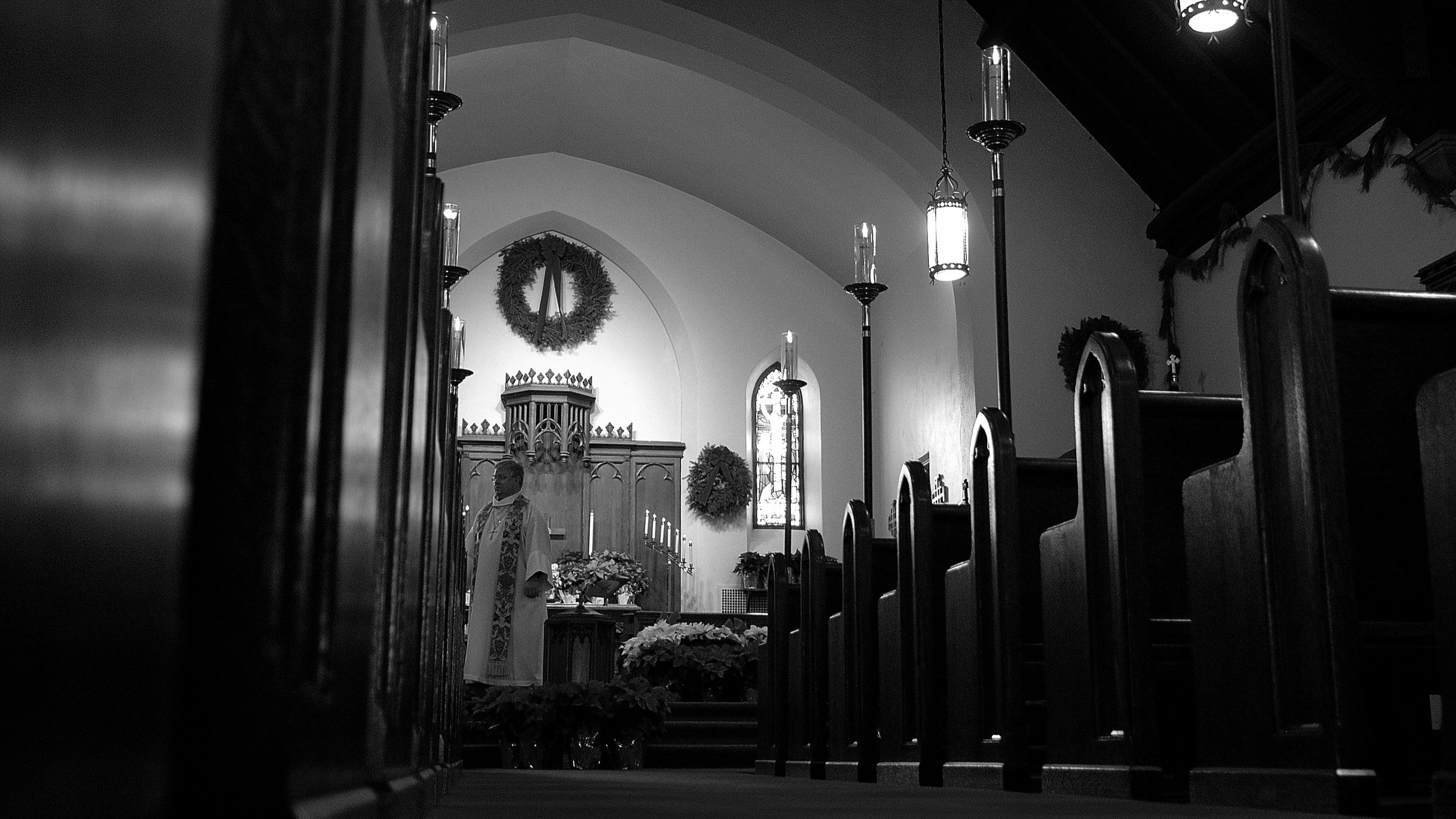A History of St. John’s
The Depot School gave our congregation much needed space not just for worship, but for education. German language reading and writing lessons were taught to our youth after school and, of course, Sunday School and confirmation classes were held there on Sunday afternoons. The congregation continued to grow rapidly, pushed along by an increasing number of immigrants and a baby boom. In just over ten years, the congregation had grown from the handful of families in the Millers’ living room to more than thirty. It was time for the faithful to get serious, and they did: our charter, which legally identifies us a church in New York State, was received in late 1913.
In 2013 St. John’s celebrated its 100th Anniversary as a legal religious entity. Our start, however, came well before 1913 when our congregation was founded in 1901 in the living room of Ludwig Miller. At the time, it consisted of a handful of families, all of which were like Ludwig: recently arrived German-Russian immigrants looking to express their shared Lutheran faith. By 1906, the congregation had outgrown the Millers’ – or anyone else’s – living room and arrangements were made to rent the Depot School, a schoolhouse owned by the Mamaroneck Board of Education. Built in 1865, the building was sparse and barely functional: a pot belly stove, hard wooden benches and a makeshift altar against the chimney. The services were in German and the pastor was borrowed from St. Luke’s in New Rochelle.
We were now, in name as well as function, a church in every sense of the word except for one: we lacked a church building. So, as real as 1913 was in terms of building St. John’s into a church, “St. John’s Evangelical Lutheran Church” was still a bit of a misnomer. In 1914 a building committee was formed and fundraisers immediately followed. By 1918 a plot of land had been identified and by early 1919 the purchase was complete.
And then…nothing. This is not to say that the congregation was inactive; on the contrary, the congregation was busy building a spiritual community and many of the activities and traditions that we still follow today. And yet, the issue of a building remained until the Town of Mamaroneck informed us that the Depot School was needed for other purposes. Pushed into action, the congregation was on the hunt again for suitable property, its first purchase having been deemed unsuitable due to its proximity to the fire station. In 1926 the land at the corner of Fenimore Road and Cortlandt Avenue was purchased and ground broken for a new church. On May 1, 1927, with the service that dedicated the new structure, St. John’s completed its metamorphosis from a congregation of a few into a community in Christ that was nearly one hundred families strong.
Over the years, much more would change at St. John’s. English-language services were introduced in 1921 and even then, only at one service per month. Over time, however, English services supplanted the German ones and the last German services were held in 1954. In the 1940s the original church windows were replaced with “traditional” windows that trace the life of Christ. Continued growth in the congregation through the 1930s and 40s prompted the construction of an annex in the 1950s to house the church office and Sunday School.
This same annex was enlarged and updated in 2015 in order to accommodate our modern needs. Worshippers have adjusted to the changing Lutheran liturgy and hymnals, and our services are now a reflection of our Lutheran tradition and contemporary practices. At the same time, our congregation has shifted to reflect the changing diversity of our community. But as the saying goes, “the more things change, the more they stay the same” and our founding forefathers established more than just a congregation or a building. They established traditions that continue to this day: the annual Christmas pageant and Easter egg hunt; a summer picnic which now incorporates an outdoor, contemporary service; service projects for our youth such as the Midnight Run; and fundraisers and events for the church and community such as the Tag Sale and Blessing of the Animals. In short, they established a place of worship that prides itself on its sense of community, not just within our walls but outside of them as well.
Since 1927 many people have come through our doors to recognize the momentous events of their religious lives. We have rejoiced at baptisms, wept at funerals and tossed rice and flower petals at beaming newlyweds. These events are, however, the exclamation points of faith. For over 100 years we have welcomed generations of families looking to share the entirety of their Christian faith in weekly celebration of our Lutheran beliefs. We invite you to join us and continue to “make history” with St. John’s.
Our Windows
St. John’s has had two sets of church windows: the ones installed with the construction of the building in 1926 and the present ones. The original windows were surely lovely, created as they were in the gothic, triangular leaded glass style that is still found in many of Larchmont and Mamaroneck’s older homes. (They are, in fact, still present in the staircase to the balcony and the coat closet in the narthex.)
Starting in the early 1940s the congregation began a years-long project to replace the original windows with the present stained glass ones. The first to be installed, in 1945, were The Annunciation to the Angels and The Nativity in the sanctuary and The Crucifixion and The Resurrection in the chancel. These windows, as were all the windows in the church, were gifted by members of the congregation.
As the remaining windows were installed, the narrative of Christ’s life and teachings came alive in pieces of painted glass. The entirety of Christ’s story is revealed, starting next to the pulpit with The Annunciation to the Angels and The Nativity and progressing down that side with Christ Teaching in the Temple and The Baptism of Christ to the Call of Peter and Andrew and The Marriage at Cana, finishing with Christ and Nicodemus and Christ with Mary and Martha. The images continue along the north wall, beginning with Christ Blessing the Children and Christ the Good Shepherd, moving on to The Widow’s Mite and Christ Healing on the Sabbath, followed by The Raising of Jairus’ Daughter and The Healing of the Blind, and concluding, of course, with The Garden of Gethsemane and The Last Supper. Images of The Crucifixion and The Resurrection flank the altar and in the choir loft the resurrected Jesus rises to the Heavens. Hidden to most of us except, perhaps, a nervous bride waiting behind closed doors to walk down the aisle, are the Tudor Rose and St. John’s Eagle flanking the double doors at the entrance to the sanctuary.
Before literacy was commonplace, stained glass windows in churches and cathedrals were used as teaching tools. Thus, information in the windows was about more than just the story associated with the imagery. Color, animals, flowers, objects and other items provided important details to Christianity’s message of heaven and hell, love and redemption, and everlasting life.
Our windows are no different. We all know the “big ones”: lambs represent little children, doves mean peace, white is for purity, and red is for blood. But like most aspects of faith, the symbolism in our windows goes beyond the obvious. Contained within, you will find symbols for industriousness (bees), souls (fish), immortality (crown), the Word of the Lord (sword) and divine blessing (olives), among others. White also represents righteousness and red symbolizes sacrifice. The Holy Spirit and authority is blue; redemption is silver; life and prosperity is green; and God’s Kingdom and glory is gold.
Symbolism in numbers is seemingly infinite, but within St. John’s windows it is confined to the primary aspects of Christianity: the Beginning and God (one), Witness and Division (two), Complete, meaning Father, Son, Holy Spirit or Yesterday, Today, Tomorrow (three), Creation, meaning the elements, directions, seasons or divisions of the day (four), and grace (five). Even the positioning of the church on the lot has meaning: the main entrance and stairs face east, to sunrise (i.e., a new day) and God’s light and glory; the altar is opposite symbolizing the setting sun and end of the Age; our windows over Long Island Sound face the south, a symbol of the quietness of the earth and refreshment. And the north wall is considered to be symbolic of power and authority, the throne of God and true worship.
We invite you to take the time to look around. Teach your children more than the stories depicted – make sure they understand the morals of these stories. Observe the colors of the glass and rejoice in the splendor of the ruby-reds and brilliant golds on a sunny day. Savor the contrast of the warmth of our congregation and the cool tone of the windows on a blustery day. But most of all follow the events of the life of Christ and watch God’s promise of grace and redemption unfold before your eyes.
We Recommend
Our Blog
Read stories and news happening at St. Johns Church.
Worship
Glance at the St. John’s schedule of services so you don’t miss out.
Events
Find out about all the great things St. John’s has to offer.











